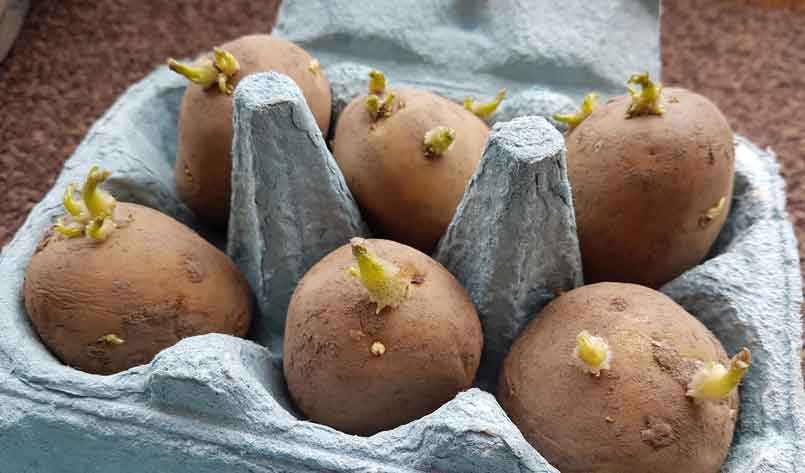
Growing Potatoes | Gardening Jargon Unravelled
Growing potatoes, especially new potatoes, can be very rewarding but there is a lot of jargon surrounding the practice. Here is our jargon-busting guide to growing potatoes.
Seed potatoes – These are potatoes that you plant in the ground in order to produce a crop of more potatoes to eat. They are grown in conditions free of aphids (greenfly), normally in cooler areas of Scotland. Aphids can spread potato viruses such as the potato mosaic virus, so seed potatoes (also called tubers) are virus-free and also, unlike some potatoes bought from the supermarket, will not have been treated with sprout suppressants.
First Early Potatoes – These are potatoes varieties that grow and mature quickly, some early varieties grown in the correct conditions can mature in as little as 7-8 weeks to give you early new potatoes. To get a head-start, they need to be chitted (see below) and early planted crops must be covered with fleece to warm the soil and prevent frost damage. Plant between early March and April and harvest between June and July. A good early variety is Pentland Javelin which can be used for boiling, salads, mash and roasting.
Second Early Potatoes – These are planted a bit later than first earlies (usually early to mid April) and can extend the harvest of new potatoes or, if left in the ground longer, ensure early harvest of maincrop (larger) potatoes. Good varieties include Constance with a buttery taste and very versatile, Estima.
Maincrop Potatoes – These are planted in mid to late April (or later) and are grown to produce full size potatoes for roasting, mash, chips and baking. They are usually harvested in August and September. Good varieties include Desiree and Maris Piper. Also check out some of the more unusual varieties we have in smaller taster bags – pop in and take a look.
Chitting Potatoes – Chitting means encouraging the seed potato to sprout before planting. It usually leads to an earlier harvest than planting direct in the ground. Seed potatoes of early varieties should be chitted. Maincrop potatoes can be chitted but is not essential. To chit the seed potatoes, put them in open egg boxes – put the end of the potato with the most eyes – where the shoots come out of (this is called the rose end) upwards in a frost-free, reasonably light but cool, airy place. Wait for the potatoes to grow strong shoots about 25mm (1 inch) in length. Do not allow them to get too long before planting or they may break.[/vc_column_text][/vc_column][/vc_row]


